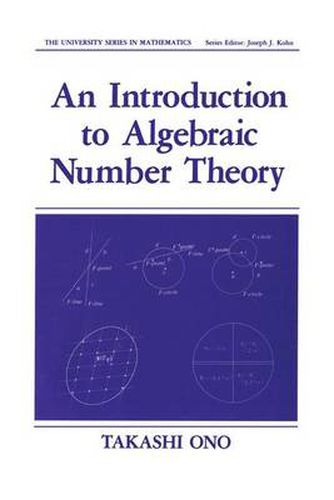Readings Newsletter
Become a Readings Member to make your shopping experience even easier.
Sign in or sign up for free!
You’re not far away from qualifying for FREE standard shipping within Australia
You’ve qualified for FREE standard shipping within Australia
The cart is loading…






This title is printed to order. This book may have been self-published. If so, we cannot guarantee the quality of the content. In the main most books will have gone through the editing process however some may not. We therefore suggest that you be aware of this before ordering this book. If in doubt check either the author or publisher’s details as we are unable to accept any returns unless they are faulty. Please contact us if you have any questions.
This book is a translation of my book Suron Josetsu (An Introduction to Number Theory), Second Edition, published by Shokabo, Tokyo, in 1988. The translation is faithful to the original globally but, taking advantage of my being the translator of my own book, I felt completely free to reform or deform the original locally everywhere. When I sent T. Tamagawa a copy of the First Edition of the original work two years ago, he immediately pointed out that I had skipped the discussion of the class numbers of real quadratic fields in terms of continued fractions and (in a letter dated 2/15/87) sketched his idea of treating continued fractions without writing explicitly continued fractions, an approach he had first presented in his number theory lectures at Yale some years ago. Although I did not follow his approach exactly, I added to this translation a section (Section 4. 9), which nevertheless fills the gap pointed out by Tamagawa. With this addition, the present book covers at least T. Takagi’s Shoto Seisuron Kogi (Lectures on Elementary Number Theory), First Edition (Kyoritsu, 1931), which, in turn, covered at least Dirichlet’s Vorlesungen. It is customary to assume basic concepts of algebra (up to, say, Galois theory) in writing a textbook of algebraic number theory. But I feel a little strange if I assume Galois theory and prove Gauss quadratic reciprocity.
$9.00 standard shipping within Australia
FREE standard shipping within Australia for orders over $100.00
Express & International shipping calculated at checkout
This title is printed to order. This book may have been self-published. If so, we cannot guarantee the quality of the content. In the main most books will have gone through the editing process however some may not. We therefore suggest that you be aware of this before ordering this book. If in doubt check either the author or publisher’s details as we are unable to accept any returns unless they are faulty. Please contact us if you have any questions.
This book is a translation of my book Suron Josetsu (An Introduction to Number Theory), Second Edition, published by Shokabo, Tokyo, in 1988. The translation is faithful to the original globally but, taking advantage of my being the translator of my own book, I felt completely free to reform or deform the original locally everywhere. When I sent T. Tamagawa a copy of the First Edition of the original work two years ago, he immediately pointed out that I had skipped the discussion of the class numbers of real quadratic fields in terms of continued fractions and (in a letter dated 2/15/87) sketched his idea of treating continued fractions without writing explicitly continued fractions, an approach he had first presented in his number theory lectures at Yale some years ago. Although I did not follow his approach exactly, I added to this translation a section (Section 4. 9), which nevertheless fills the gap pointed out by Tamagawa. With this addition, the present book covers at least T. Takagi’s Shoto Seisuron Kogi (Lectures on Elementary Number Theory), First Edition (Kyoritsu, 1931), which, in turn, covered at least Dirichlet’s Vorlesungen. It is customary to assume basic concepts of algebra (up to, say, Galois theory) in writing a textbook of algebraic number theory. But I feel a little strange if I assume Galois theory and prove Gauss quadratic reciprocity.